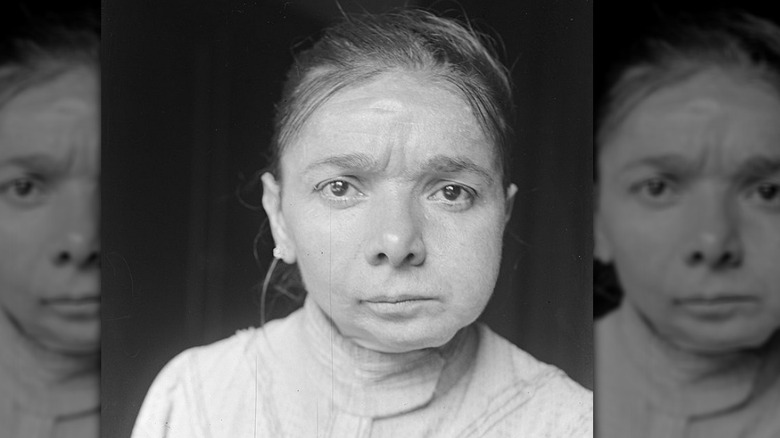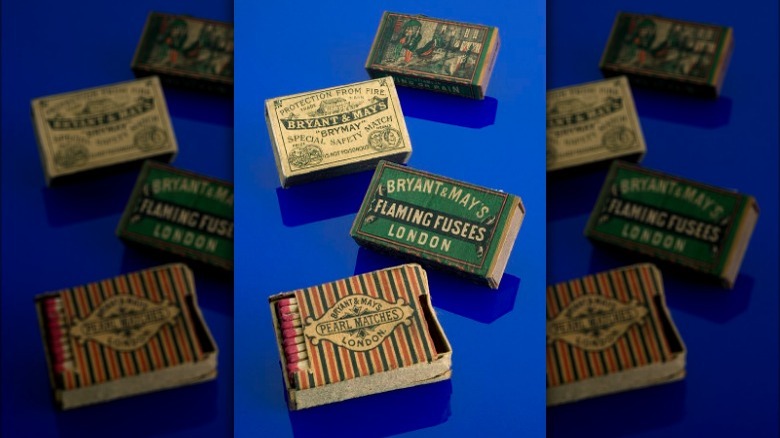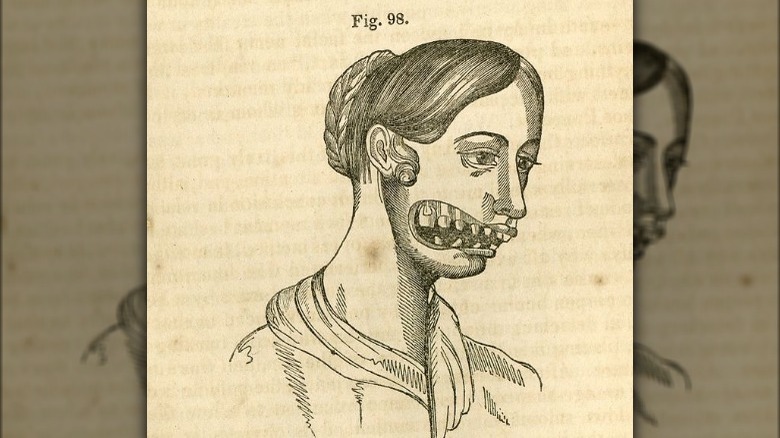What Was Phossy Jaw And How Did It Kill People?
Released in 2022, "Enola Holmes 2" is the sequel to the 2020 "Enola Holmes" film starring Millie Bobby Brown in the title role. Brown plays a character who follows the footsteps of her famous big brother Sherlock into a life of solving crime (via IMDb). In the second movie, based on a popular young adult book series from Nancy Springer, Enola Holmes has established her own detective agency when a poor matchstick girl hires her to help find her missing sister (per Nancy Springer).
As The Conversation explains, a matchstick girl or woman worked in the match manufacturing industry in the Victorian era, when the Enola Holmes stories take place. Part of the "Enola Holmes 2" plot involves a true-to-life medical condition called "phossy jaw." Phossy jaw was a common affliction for those who made matches for a living in late 19th-century England. The cause of the condition relates to the manufacturing process through which those matches were made, according to the Royal College of Surgeons of England (RCSE).
Matches at that time were made with white phosphorous
As the RCSE goes on to note, "strike anywhere" matches were a relatively new invention at the time the Enola Holmes stories are set. Since they were much easier to light than matches once were, they sold well. As a result, a profitable match manufacturing industry sprung up in England and elsewhere. The ease by which those matches were lit came about was due to the white phosphorus in the tip — a toxic substance, as the Centers for Disease Control and Prevention (CDC) notes.
In the 1850s a disease called phosphorus necrosis of the jaw (phossy jaw) appeared, which was an often fatal condition in which parts of the human jawbone became exposed, among other signs and symptoms. Those employed in the matchstick manufacturing industry at that time were mostly women, like the matchstick girl in "Enola Holmes 2," who worked long hours, were exposed to high levels of white phosphorus, and therefore particularly susceptible to this condition.
The gums of phossy jaw victims glowed white
In addition to exposed human jawbone, phossy jaws caused by prolonged inhalation of white phosphorus included gums that glowed white, abscesses in the mouth, disfigured faces, and brain damage. Some with phossy jaws were treated by surgery during which time entire portions of jaw were removed. Given the surgical technology at that time, that was no small task and a very painful experience for the patient, according to the RCSE. Many phossy jaw patients died. Other medical conditions related to phosphorus inhalation at that time included phossy lung, phossy marrow, and phossy brain, which could cause seizures (via Colgate).
As evidence mounted that white phosphorus posed a danger to those in the business of making matchsticks and consumers, the substance was banned in 1906 and more expensive and safer red phosphorus was used instead, which today is still on the sides of some modern matchstick boxes, per The University of Washington Department of Chemistry website. Certain modern-day medications for conditions such as osteoporosis contain bisphosphonates which can sometimes, though rarely, cause bisphosphonate-induced osteonecrosis of the jaw (ONJ), similar to phossy jaw.


